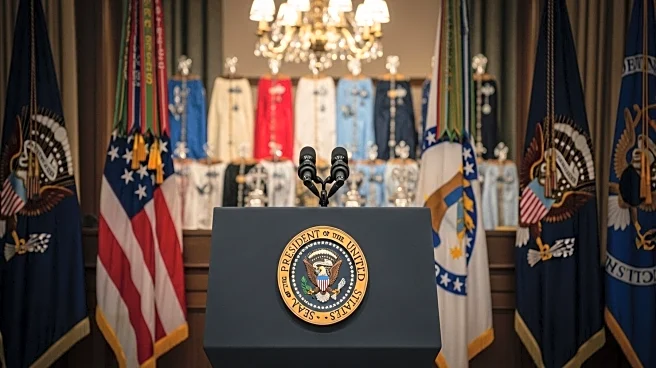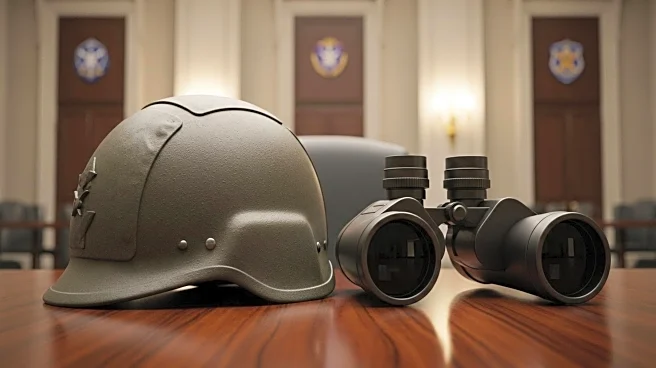What is the story about?
What's Happening?
Defense Secretary Pete Hegseth's recent comments and actions indicate a shift away from the U.S. military's historical role as a driver of social change. Hegseth has expressed disinterest in diversity and inclusion initiatives, focusing instead on reversing what he describes as 'decades of decay' in the military. This approach contrasts with the military's past efforts to lead social progress, such as desegregation and the inclusion of women in combat roles. Hegseth's stance has sparked debate about the military's role in promoting social and cultural change.
Why It's Important?
Hegseth's approach to military leadership highlights a significant departure from the military's historical role in advancing social change. By deprioritizing diversity and inclusion, Hegseth's actions could impact the military's ability to reflect and represent the diverse society it serves. This development raises questions about the military's future role in promoting social progress and the potential consequences of reversing past initiatives aimed at fostering inclusivity.
What's Next?
As Hegseth continues to implement his vision for the military, there may be increased scrutiny and debate about the implications of his policies. Observers will be watching to see how these changes affect military culture and its relationship with broader societal values. The military's approach to diversity and inclusion will likely remain a contentious issue, with potential impacts on recruitment, retention, and public perception.
Beyond the Headlines
Hegseth's stance on military diversity and inclusion highlights deeper cultural and ethical considerations about the role of the armed forces in society. The development raises questions about the balance between military effectiveness and social responsibility, and the potential impact of leadership decisions on the military's public image. This could lead to a broader discussion about the military's role in shaping social and cultural norms.
AI Generated Content
Do you find this article useful?













